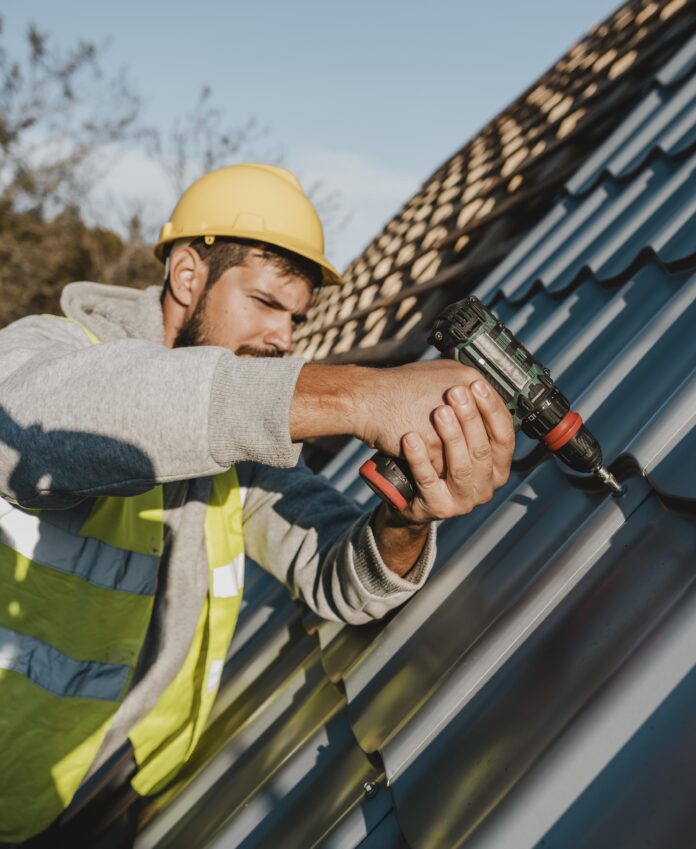Introduction
Recognizing early roof repair signs can save you from costly roof replacement down the line. Your roof is one of the most critical parts of your home, and staying vigilant about its condition is essential to protecting your property. From missing shingles to leaks and sagging, knowing when your roof needs attention can prevent bigger issues. Here are 10 clear signs that it may be time for roof repair or a complete roof replacement.
Common Roof Repair Signs You Shouldn’t Ignore

Recognizing roof repair signs early can save you from larger, more expensive problems down the road. Issues such as cracked shingles, water stains, or granule loss are all indicators that your roof needs attention. Ignoring these roof repair signs can lead to leaks, structural damage, and even the need for a full roof replacement. Regular roof inspections and prompt repairs are key to maintaining the longevity and safety of your home.
Visible Damage
Missing or Broken Shingles
Shingles are the outer layer of your roof, and when they start to go missing or break, your roof’s protection is compromised. Whether due to heavy storms, high winds, or simple wear and tear, missing shingles expose your home to potential leaks and other damages. If you spot shingles on the ground or notice bare patches on your roof, it’s time to take action.
Cracked or Curled Shingles
Shingles can also curl or crack due to aging or prolonged exposure to weather elements like sunlight and moisture. Cracking usually indicates that the shingles have become brittle and may fail to protect your roof adequately. Curling, on the other hand, can be a sign that moisture is trapped underneath or that the shingles are reaching the end of their lifespan.
Leaks and Water Damage
Water Stains on Ceilings and Walls
One of the most obvious signs of a roof problem is water stains on your ceilings or walls. These stains are usually the result of water seeping through a damaged roof. If you notice brown or yellow spots inside your home, it’s likely that your roof is allowing water to get in, which can lead to mold growth, structural damage, and more.
Mold and Mildew Growth
Leaks not only damage your home but can also encourage mold and mildew to grow, creating health hazards. Mold thrives in damp environments, and a leaky roof can quickly turn your attic or walls into breeding grounds for mold, which can aggravate allergies or respiratory issues.
Pooling Water on the Roof
Flat roofs, in particular, are prone to pooling water. This can happen if the roof is not draining properly, and over time, standing water can weaken the roof’s structure or lead to leaks. If you see water pooling on your roof after rainstorms, it’s time to address the issue before it causes serious damage.
Roof Sagging
Structural Issues Indicating Roof Sag
A sagging roof is a major red flag. Roofs should always maintain a straight, even surface, and sagging indicates that there’s a problem with the structural integrity. This could be due to water damage, weakened rafters, or even too much weight from snow or debris. If your roof looks uneven, it’s best to have a professional assess the situation before it gets worse.
Granule Loss
Bare Spots on Asphalt Shingles
Asphalt shingles are coated with granules that protect them from the sun’s UV rays. Over time, these granules can start to wear off, often visible in your gutters or on the ground. If your shingles are losing granules, they become more vulnerable to sun damage, which can speed up their deterioration.
Sunlight Through the Roof
Gaps in the Attic
If you can see sunlight peeking through your roof when you’re in the attic, that’s a clear sign of trouble. These gaps not only allow light but also water, debris, and pests into your home. Gaps can form due to worn-out shingles, damaged flashing, or even poor installation.
Aging Roof
Roof Lifespan
Different roofing materials have different lifespans, but as a general rule, most roofs last between 20 to 30 years. If your roof is nearing or has surpassed its expected lifespan, it’s wise to have it inspected for potential issues, even if there are no visible problems.
High Energy Bills
Poor Insulation and Ventilation
A damaged roof can affect your home’s insulation, leading to higher heating or cooling costs. If you’ve noticed your energy bills creeping up, it could be due to leaks or poor ventilation in your roof, allowing heat or cool air to escape.
Exterior Roof Damage
Gutters Filled with Shingle Granules
Your gutters play a crucial role in draining water away from your roof, but if they’re filled with granules, this is a sign that your shingles are wearing down. It’s important to clean your gutters regularly and check for granules, which can indicate that your roof is nearing the end of its lifespan.
Damaged Flashing
Leaky Chimneys and Skylights
Flashing is used to seal areas where your roof meets other structures like chimneys or skylights. If the flashing is damaged or cracked, it can allow water to seep into your home. Keeping an eye on these areas and repairing flashing as needed can prevent more significant damage.
Unwanted Pests
Critters in Your Attic
A damaged roof can create entry points for pests like squirrels, raccoons, or birds. If you hear scratching or movement in your attic, it’s likely that animals have found their way inside through gaps in your roof. Patching these entry points will not only keep your roof intact but also protect your home from infestation.
Conclusion
Your roof is a critical part of your home’s protection, and staying on top of repairs is key to avoiding costly replacements. If you notice any of the signs mentioned above, don’t hesitate to call a professional to assess the situation. Timely repairs can extend the life of your roof and prevent further damage.














